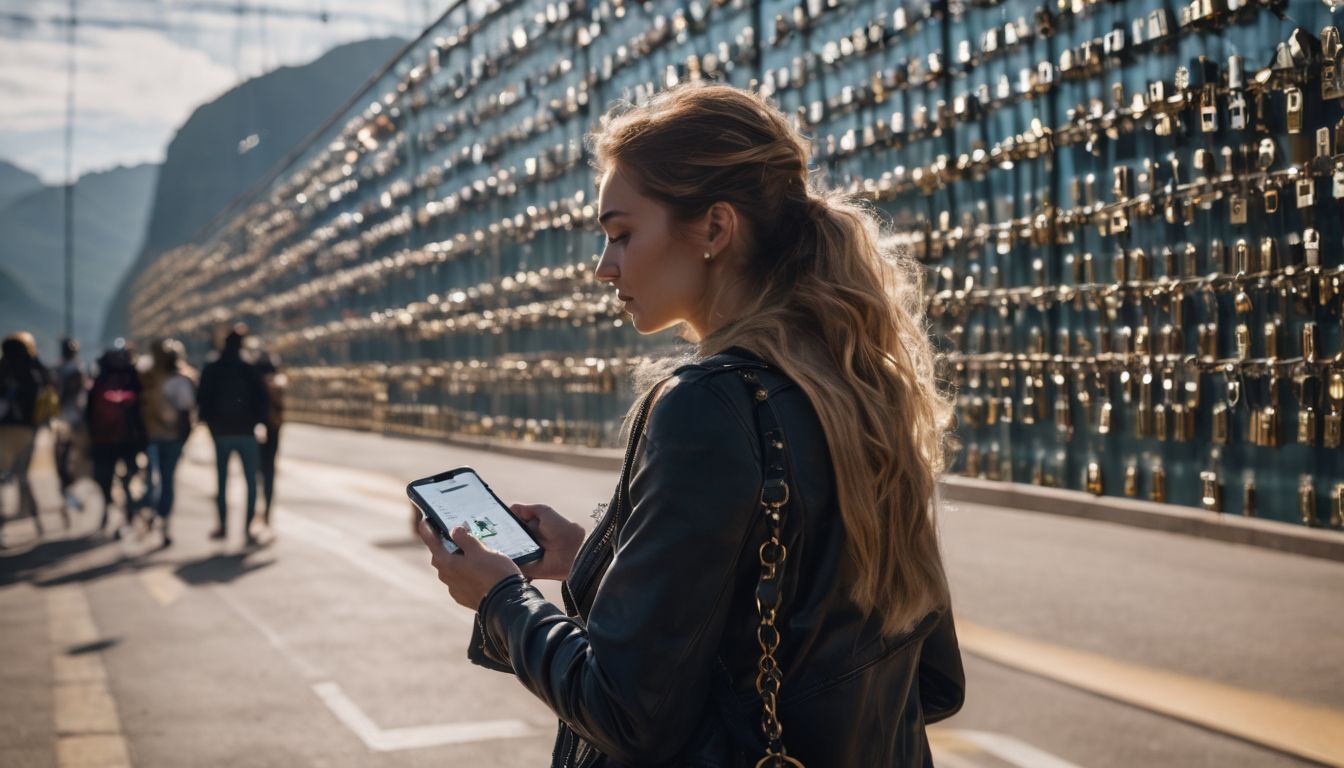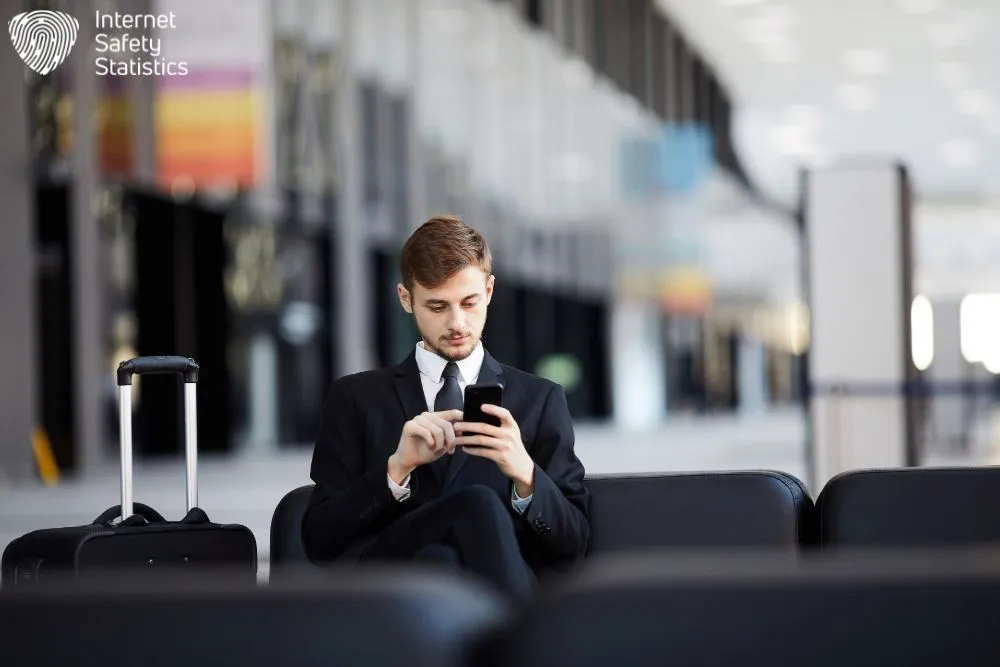
With billions of users worldwide, social media has revolutionised how we interact and engage with the world around us. Yet, as we immerse ourselves in the digital realm, it’s essential to recognise the importance of navigating social media safely. From safeguarding personal information to identifying online threats, this article serves as a comprehensive guide to help you navigate the complexities of social media securely and confidently.
Understanding the Risks of Social Media Use
Cyberbullying, online predators, identity theft and viral misinformation are just a few of the risks associated with social media use. It’s important to be aware of these potential dangers in order to navigate social media safely.
Cyberbullying
Cyberbullying is a serious issue in the digital age, affecting individuals of all ages, particularly young and vulnerable users. Hurtful messages, spreading rumours, or sharing private information without consent can deeply affect someone’s mental health and well-being.
Social media platforms often become arenas for such harmful behaviour, which can go unnoticed by adults. It’s crucial to monitor your children’s online interactions and educate them on how to respond to cyberbullying. Victims of this modern menace may feel isolated; however, proactive measures can help combat the problem. Parents should encourage their kids to speak up about any online harassment they encounter.
Office workers need to be aware that cyberbullying isn’t limited to school-aged individuals—it can also occur in professional environments. Tools like reporting features and privacy settings are key elements in safeguarding against unwanted contact or abuse on social networks. Moving forward into understanding online predators provides another layer of insight into the complexities of navigating social media safely.
Online Predators
After understanding the risks of cyberbullying, it’s essential to address another significant concern—online predators. Online predators are individuals who use social media and other online platforms to exploit and manipulate others, especially children and teenagers.
These individuals often create fake profiles or adopt anonymous personas to gain the trust of unsuspecting victims before engaging in harmful or illegal activities. It is crucial for both parents and internet users to be aware of the signs of potential online predator activity in order to protect themselves and their loved ones from these threats.
Social media guidelines emphasise that educating children about safe online practices can help prevent them from falling prey to online predators. Additionally, setting up privacy across all social platforms can further safeguard against potential threats.
Identity Theft
After understanding the risks of online predators, it’s crucial to be aware of identity theft when using social media. Protecting personal information is essential in preventing this type of cybercrime.
Safeguard your accounts with strong and unique passwords, and be cautious about sharing sensitive details such as your address, phone number, or financial information online. Regularly review privacy settings across all platforms to limit access to personal data.
Implementing two-factor authentication can provide an extra layer of security by requiring a second form of verification beyond just a password. Be mindful of the links you click on and avoid suspicious websites that may attempt to steal your personal information through phishing scams.
Viral Misinformation
Viral misinformation can spread rapidly on social media platforms, leading to confusion and panic. It’s crucial to verify the accuracy of information before sharing it. Always check reliable sources or fact-checking websites to confirm the validity of any news or updates you come across online. By being cautious about what you share, you contribute to a safer and more trustworthy online community.
Setting Up Safe Privacy Settings
Ensure your online safety by using strong and unique passwords, enabling two-factor authentication, limiting third-party apps and websites, and reviewing and adjusting privacy settings on each platform.
Use Strong and Unique Passwords
Protect your online accounts by using strong and unique passwords. A strong password should include a combination of uppercase and lowercase letters, numbers, and special characters.
Avoid using easily guessable information like birthdays or pet names. Remember that unique passwords for different accounts are essential to prevent hackers from accessing multiple accounts if one password is compromised.
Create a secure password with at least 12 characters to maximise protection against unauthorised access. Consider using phrases or sentences that only you would know to make your password even more secure.
Enable Two-Factor Authentication
After setting up strong and unique passwords, the next vital step is to enable two-factor authentication for added security. This additional layer of protection requires a second form of verification, such as a code sent to your mobile device or email, ensuring that only authorised users can access your social media accounts.
With two-factor authentication enabled, even if someone gains access to your password, they won’t be able to log in without the second verification step. By enabling two-factor authentication on all your social media accounts, you significantly reduce the risk of unauthorised access and protect your personal information from potential cyber threats.
Limit Third-Party Apps and Websites
After setting up two-factor authentication to secure your social media accounts, it’s crucial to limit third-party apps and websites that have access to your personal information. This precaution helps reduce the risk of data breaches and unauthorised use of your data.
Avoid granting unnecessary permissions, review app permissions regularly, and consider alternatives if a platform asks for excessive access. Protecting your online privacy also involves being mindful of the websites you visit and the applications you download. By exercising caution with third-party platforms, you can safeguard your digital footprint and minimise exposure to potential security threats.
Be vigilant when managing third-party app permissions as part of your online safety measures. Regularly review the access these tools have in order to prevent any unwarranted exposure or misuse of personal information.
Review and Adjust Privacy Settings on Each Platform
Check and modify your privacy settings for each social media platform you use. Ensure that only people you trust have access to your personal information. Protect yourself from potential cyber threats by setting strong, unique passwords and enabling two-factor authentication on all platforms.
Limit third-party app permissions to safeguard against unauthorised data usage. Additionally, regularly review and update privacy settings to align with your comfort level when sharing personal information online.
Protecting your privacy is essential for maintaining a safe online presence. Guard yourself from identity theft, cyberbullying, and other online risks by actively managing the privacy settings across all social media platforms you engage with.
Tips for Navigating Social Media Safely
When using social media, avoid clicking on suspicious links and be cautious of sharing personal information. Always report and block any suspicious or harassing activity to ensure a safe browsing experience.
Avoid Clicking on Suspicious Links
Be cautious when browsing social media and avoid clicking on any links that seem suspicious. Scammers often use enticing links to steal personal information or install harmful software onto your device.
It’s crucial to verify the legitimacy of a link before clicking on it, as this simple action can protect you from falling victim to phishing attacks or malware infections. Always hover over the link to preview its destination or use reputable tools that can analyse the safety of a website before accessing it.
Protect yourself by educating others about the risks associated with clicking on suspicious links, especially children who might be more vulnerable to online threats. By adopting these proactive measures, you can contribute to a safer online environment for both yourself and those around you.
Don’t Overshare Personal Information
Protect your online identity by refraining from sharing personal details like your home address, phone number, or financial information on social media platforms. Consider the potential risks of sharing too much information and be mindful of who has access to it.
Use privacy settings and think twice before posting anything that could compromise your safety or security. Keep sensitive details private to safeguard against identity theft, cyberbullying, and other online threats. Be cautious when interacting with strangers, and ensure that your digital footprint only reflects what you are comfortable with others seeing.
Be Cautious of Accepting Friend Requests from Strangers
Accept friend requests from only people you know, as it helps protect your online safety. Avoid adding strangers to your social network, especially if they have no mutual connections or appear suspicious. Cybercriminals often use fake profiles to gather personal information or scam unsuspecting users. Be mindful of the risks and prioritise your privacy by declining friend requests from unfamiliar individuals.
Stay vigilant when using social media, and be wary of accepting friend requests from unknown sources. Protecting yourself and your loved ones begins with being cautious about who you connect with online.
Report and Block Any Suspicious or Harassing Activity
Monitor and report any suspicious or harassing activity online to ensure a safer social media experience. Take action by documenting the information, including screenshots of the content, and promptly notify the platform’s support team. By doing so, you contribute to maintaining a secure online environment for yourself and others.
Blocking individuals engaging in such behaviour can also create a protective barrier between you and potential harm. Utilise privacy settings to prevent these individuals from accessing your profile or contacting you.
Having Conversations about Social Media Use

Educating children about online safety is crucial. The digital world offers a vast landscape of information and connection, but it’s important to equip them with the knowledge to navigate it responsibly. Encourage open communication and set rules and boundaries for social media use. Talk to them about the potential risks of interacting with strangers online, sharing personal information, and cyberbullying.
Educate Children about Online Safety
Teach children about online safety to ensure they are aware of potential risks and how to navigate social media responsibly. It is crucial for parents, office workers, and internet users to engage in open and ongoing conversations about safe online behaviour. Consider the following ways to educate children about online safety:
- Explain the importance of not sharing personal information such as full name, address, phone number, or school details on social media platforms.
- Encourage children to think critically and verify information before believing or sharing it online, particularly with regard to sensitive topics or news stories.
- Discuss the risks associated with interacting with strangers and emphasise the importance of only accepting friend requests from people they know in real life.
- Teach children how to recognise and handle cyberbullying situations, including how to report abusive behaviour and seek help from a trusted adult.
- Set clear guidelines for appropriate screen time and establish rules regarding which social media platforms are suitable for their age.
Encourage Open Communication about Their Online Activity
Encouraging open communication about online activity is crucial for ensuring the safety of children and promoting responsible social media use. Parents can start by educating their children about potential risks and establishing an open dialogue where kids feel comfortable sharing their online experiences. It is imperative to set clear guidelines and boundaries for social media use, creating a supportive environment that encourages transparency.
Similarly, office workers and internet users should also prioritise open communication about their online activity. By fostering an environment where colleagues feel comfortable discussing potential security threats or concerns related to social media usage, individuals can collectively work towards maintaining a safer digital landscape.
Set Rules and Boundaries for Social Media Use
- Clearly define the time limits and acceptable usage of social media platforms.
- Encourage open dialogue about online activity and establish trust to report any concerning behaviour or content.
- Discuss the importance of thinking before sharing and educate about the potential consequences of online actions.
- Enable parental controls and monitoring tools to oversee social media usage, ensuring compliance with set rules.
- Emphasise the significance of maintaining a healthy balance between online and offline activities for overall well-being.
Staying Safe While Travelling

When travelling, it’s important to be cautious about using public Wi-Fi and managing location services on your social media accounts. Remember to practice safe browsing habits and remain aware of potential threats while connecting to wireless networks abroad.
Public Wi-Fi Safety
When using public Wi-Fi networks, it is crucial to be cautious about the information you access and share. Hackers can easily intercept data transmitted over public Wi-Fi, potentially gaining access to personal or sensitive information.
Always use a virtual private network (VPN) when connecting to public Wi-Fi to create a secure connection and encrypt your data. Additionally, avoid accessing or sharing confidential information such as financial details or login credentials while connected to public Wi-Fi networks.
Furthermore, be mindful of the legitimacy of the network you connect to; refrain from connecting to open or unsecured networks that do not require a password for access. You can also disable automatic connections on your devices to prevent them from joining unknown networks without your knowledge.
Managing Location Services
Keep your location services under control by adjusting the settings on your social media accounts. Navigate to the platform’s privacy settings and ensure that you are only sharing your location when necessary.
Limiting location visibility can help protect your privacy and keep you safe from potential risks associated with broadcasting your whereabouts online. Be cautious of oversharing when using location services, especially whilst travelling. Publicly announcing your travel updates can make you vulnerable to theft and other security issues.
Wireless Connectivity
Enable secure Wi-Fi connections to protect your online activity from potential threats. Use a reliable Virtual Private Network (VPN) when accessing public Wi-Fi networks to maintain privacy and security.
Avoid sharing sensitive information over unsecured networks, as it puts you at risk of identity theft. Regularly review your device’s wireless connectivity settings to ensure that only trusted devices have access, minimising the chances of unauthorised access.
Be cautious about enabling location services on social media platforms, as it can reveal your whereabouts to strangers. Protecting children’s wireless connectivity also requires attention; consider setting up parental controls and educating them about the risks of sharing personal information online.
Emphasise the importance of safe browsing habits and inform them about the dangers associated with accepting friend requests from strangers or sharing their location on social media platforms.
Remembering to Be Cautious on Social Media While Abroad
While travelling and using public Wi-Fi, it’s crucial to be cautious on social media. Avoid oversharing personal information and posting your exact location in real time. As a safety measure, manage your location services and only connect to secure wireless networks.
Hackers may exploit public Wi-Fi vulnerabilities to gain access to your accounts or steal sensitive information. It’s important to stay vigilant when accessing social media platforms abroad, as cybercriminals may target travellers for identity theft or phishing scams.
Be mindful of the potential risks associated with sharing personal details online, especially while travelling. Always prioritise privacy and security by adjusting your social media settings and being selective about the content you share during your trips.
In conclusion, navigating social media safely requires active participation from both users and platform providers. Protecting personal information and setting up strong privacy settings can help mitigate risks such as cyberbullying, identity theft, and online predators.
Educating children about online safety and having open conversations about social media use are crucial steps in promoting a safer digital environment for everyone. Staying vigilant while travelling and implementing cybersecurity tips will contribute to a more secure online experience.
